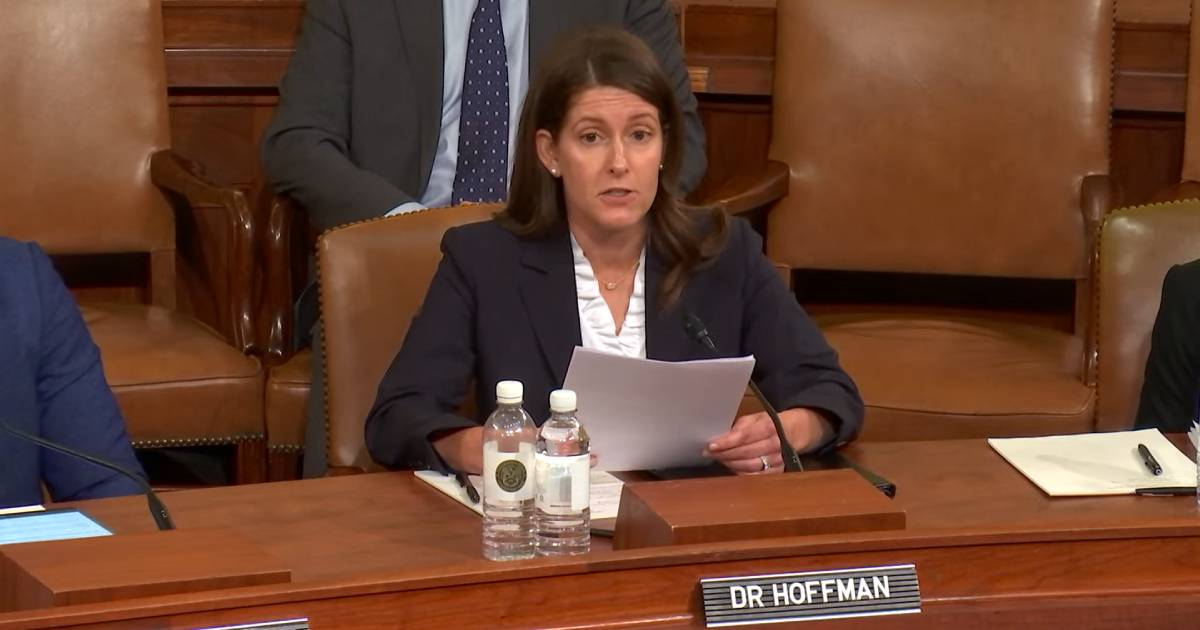Mathematica Principal Researcher and disability policy expert Denise Hoffman testified at a joint House Ways and Means Social Security and Work and Welfare Subcommittee hearing titled, “Untapped Talent in America: Removing Barriers to Work and Supporting Opportunity for Individuals with Disabilities.” In her opening statement, Hoffman highlighted how complex Social Security disability rules, limited beneficiary awareness, and disincentives to work hinder employment among people with disabilities, and called for simpler rules, better implementation, and renewed Social Security Administration authority to test reforms that could support work and financial independence. Read Hoffman’s opening statement, as prepared for delivery, below. Her full written testimony is available here.
“Chairman Smith, Chairman Estes, Chairman LaHood, Ranking Member Neal, Ranking Member Larson, Ranking Member Davis, and distinguished members of the Subcommittee—thank you for inviting me to testify on this important topic.
“I’ve studied disability policy for 15 years at Mathematica. This includes leading evaluations of major Social Security Administration programs, such as Ticket to Work and the Benefit Offset National Demonstration, as well as research on work-related overpayments. My testimony today is based on these experiences.
“The Supplemental Security Income and Social Security Disability Insurance programs serve people with severe health impairments who meet stringent eligibility criteria—two in 10 die within five years of benefit award. Many cannot work, but some have the capacity and desire to do so.
“Unfortunately, the current SSI and SSDI disability systems create significant barriers to work.
“The first barrier is that many beneficiaries are unaware of or have limited understanding of program features. For example, just 28% of SSDI beneficiaries interested in working reported understanding the Trial Work Period, which allows beneficiaries to test work without a reduction in benefits.
“This confusion and misunderstanding can create hesitancy to work.
“The second barrier is that program complexity makes implementation difficult.
“In 2022, it took an average of 262 days for SSA to complete an earnings review, not counting delays in initiating the review.
“These types of delays often lead to overpayments.
“My research shows that 82% of SSDI beneficiaries who work and earn above a certain program threshold are overpaid. Overpayment can cause financial harm to beneficiaries who struggle to repay overpayment debt, reduce their work activity, and impose significant costs to SSA.
“The third barrier is that current program features, referred to as “work incentives,” can actually function as disincentives.
“A key example is SSDI’s so-called “cash cliff”: after the Trial Work Period, SSDI benefits drop to $0 once earnings exceed a certain threshold. Research shows that some working beneficiaries, in alignment with program incentives, intentionally limit their earnings to avoid losing their benefits.
“These three barriers also undermine SSA’s marquee employment support program, Ticket to Work, by creating confusion and fear around returning to work.
“So, what can be done?
“In the short term, there’s an opportunity to improve current program operations. But, there is also a need for evidence about larger-scale reforms with the potential to generate more impactful results.
“The first action to ensure the timely and accurate implementation of current program rules.
“Beneficiaries need clear, accurate information and explanations of how program rules affect their benefits, supported by modernized processes—such as increased automation of earnings processing—to avoid or reduce overpayments.
“The second action is to re-enable SSA to gather rigorous evidence to inform policy and programmatic decisions related to current operations.
“The recent discontinuation of several data-related efforts has limited access to research-ready administrative files and new survey evidence, slowing evaluation of programs like Ticket to Work and limiting the availability of timely data to improve program operations and support agency-wide efficiencies.
“The final action is for Congress to reinstate SSA’s Section 234 demonstration authority, which expired in 2021, and previously provided a solid evidence base for policy decisions related to SSDI.
“BOND—which tested replacing the SSDI cash cliff with a $1 benefit offset for every $2 earned—serves as an example of why testing is essential. The BOND demonstration revealed that the tested policy would cost the SSDI trust fund an estimated $1 billion annually without increasing average beneficiary earnings. Policymakers used this evidence to make an informed decision against national implementation.
“Demonstration authority is essential to evaluate compelling ideas for reforms that encourage work, simplify program rules, and are administratively feasible.
“Many beneficiaries want to work but are held back by a system that is difficult to navigate and can discourage work. By improving implementation and restoring SSA’s demonstration authority to identify large-scale improvements, Congress can help ensure that SSA effectively supports beneficiaries who have the ability and desire to work.
“Again, thank you for the opportunity to appear today. I look forward to your questions.”
Media Contact
-
Mike Burns
Mathematica, Senior Director, Communications and Public Affairs
mburns@mathematica-mpr.com
202-484-4683

